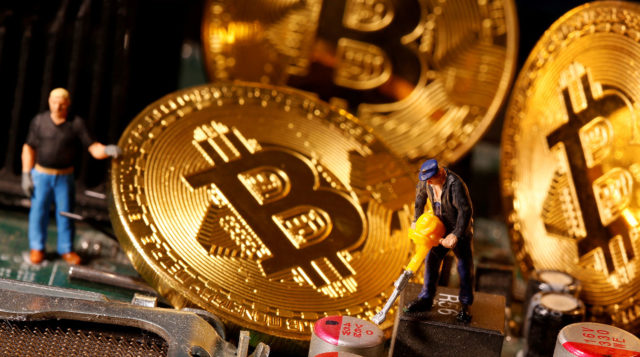Cryptocurrency owners keep their money in virtual "wallets" securely encrypted using private keys. In order to transfer funds between the owners of two e-wallets, this transaction must be recorded in a decentralized digital ledger. Special computers collect data on the latest transactions with bitcoin and other cryptocurrencies approximately every 10 minutes and turn them into a complex mathematical puzzle. This “transaction within the puzzle” then awaits confirmation.
The transfer of funds is confirmed only if one of the miners - members of another category of users - independently receives a solution to this problem, confirming the legitimacy of the transaction, after which the funds are finally transferred from one wallet to another. At the same time, each member of the army of simultaneously working miners strives to win this "run" and find a solution to the puzzle in order to confirm the transaction.
Miners gradually came to the conclusion that even the latest PC with a powerful processor is not suitable for profitable mining, since it cannot cover electricity costs.
The first miner who manages to solve the problem and decrypt the puzzle receives a reward - usually a certain amount of new cryptocoins. This approach served as an excellent motivation for those who did not spare their time and computing power to maintain the functionality of the network and create more new coins. But as the complexity of these mathematical puzzles steadily increased (and this was more true for Bitcoin than for other cryptocurrencies), miners gradually came to the conclusion that even the latest PC with a powerful processor is not suitable for profitable mining, since it cannot cover the costs of electricity.
Miners have taken the game to the next level by using powerful graphics cards, often combining multiple graphics cards to perform even more labor-intensive calculations. Finally, miners who wanted to remain competitive began building huge computer “farms” with specialized hardware to mine cryptocurrencies on an industrial scale. We are at this point of development today: serious players in the cryptocurrency market are investing heavily and raising the stakes in the fight against other miners in order to solve equations before others and get the right reward.
The growth of mining has led to what is now an extremely expensive arms race: to remain profitable, miners are forced to consume huge amounts of computing power and electricity. For example, before the Chinese government closed all cryptocurrency farms in the country, each such farm had monthly electricity bills of up to $80,000.
I am sure that it will be useful for every miner to read about 3070 mining profitability in more detail. Don't waste time and start earning

